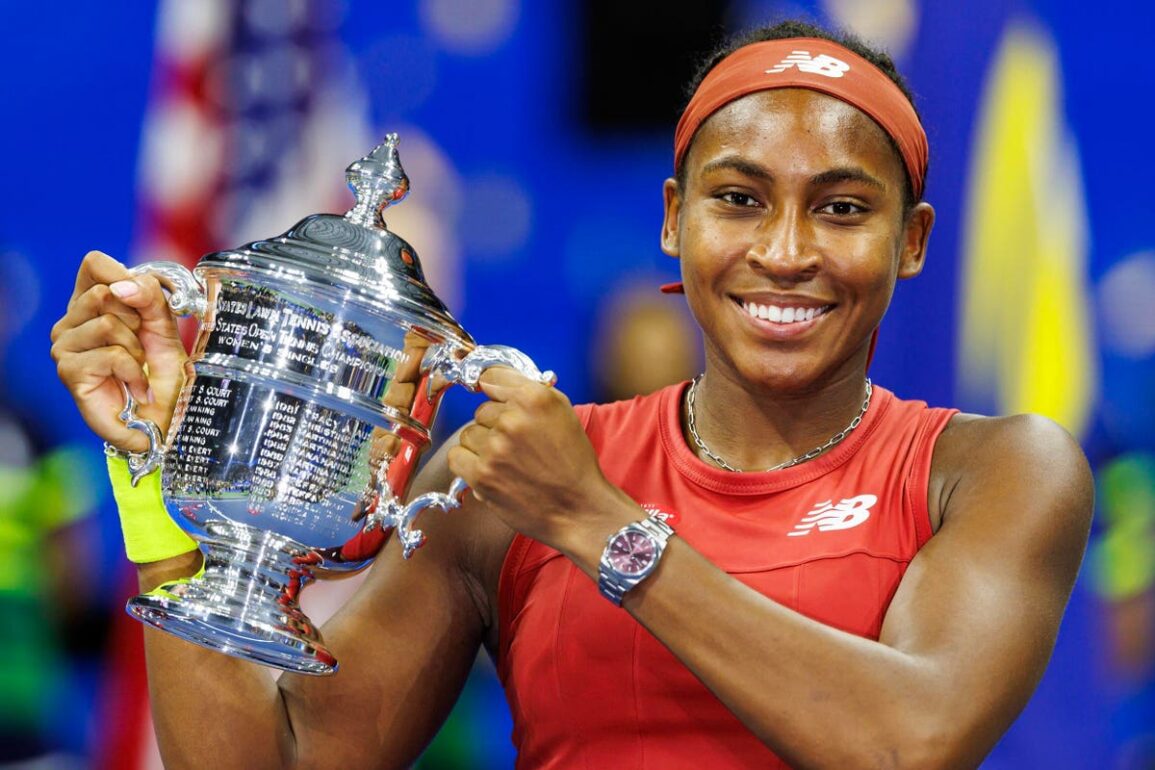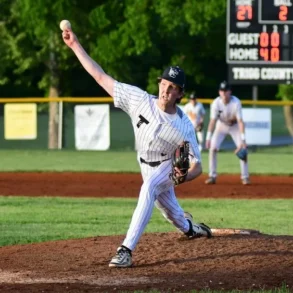
The 2023 U.S. Open may give American tennis yet another shot in the arm, furthering the surge that it’s experienced over the course of the Covid-19 pandemic. On Saturday, Coco Gauff, the 19-year-old tennis star from Florida, won the women’s singles championship by topping Aryna Sabalenka of Belarus on September in three sets, 2-6, 6-3, 6-2. Earlier in the tournament, another American, Madison Keys, made it all the way to the semi-finals of the women’s draw before falling to Sabalenka in three sets. And on the men’s side, for the first time since 2005, the quarterfinals featured three American men—Frances Tiafoe, Ben Shelton, and Taylor Fritz. Yes, over the past two weeks, American professional tennis players have served as positive examples for Americans nationwide in more ways than one and in an unprecedently diverse manner. Four of the five players mentioned above—Gauff, Keys, Tiafoe, and Shelton—are Black.
Seeing more persons of color achieve such success at this widely-watched Grand Slam event is a big deal. It could further smash away any remaining misconceptions that tennis is somehow only for the so-called “elite,” people of certain socio-demographic backgrounds. The success of Serena and Venus Williams over the past two decades has probably helped attract a greater range of people to the sport. In fact, during the U.S. Open, Gauff described Serena Williams as her “idol” and said that even though she didn’t have a chance to play against Williams, “I’m still happy to just be a product of her legacy and be out here for American tennis.” So, Gauff’s success at this year’s U.S. Open could, in turn, inspire even more kids from diverse backgrounds to pick up a racket. The same applies for the other American players, too. Both Gauff and Shelton did participate in this year’s edition of the Arthur Ashe Kids’ Day that occurred at the USTA Billie Jean King National Tennis Center in the week prior to the start of U.S. Open and each year endeavors to connect more and more youth with the sport.
Ben Shelton of USA made it to the semifinals of the men’s singles draw before falling to Novak … [+]
Anadolu Agency via Getty Images
Tennis participation in the U.S. has been growing in each of the last three years, up 33% in total since 2020, as I covered for Forbes in January, Over the same time period, the diversity of those playing the sport has grown as well, with a 90% increase in the number of tennis players of Hispanic/Latino descent, a 46% increase in the number of Black tennis players, and a 37% increase in the number of tennis players of Asian and Pacific Islander descent, as I reported for Forbes in March.
The Covid-19 pandemic has probably contributed to the overall growth of tennis participation since 2020. Back in the Spring of 2020 when the U.S. was in a bit of tailspin trying to deal with the spread of the severe acute respiratory syndrome coronavirus 2 (SARS-CoV-2), many Americans were left spinning for ways to stay physically active and social with each other while remaining safe. Lo and behold, tennis—where you can hit topspin, underspin, and lots of other spins—turned out to be a solution for many. And this surge in tennis participation has proven to be much more than passing 2020 fads like going months without a haircut or taking business meetings while not wearing pants. The continuing growth in tennis participation has shown that many people who first picked up rackets in 2020 have continued to swing those rackets since.
But Covid-19 was by no means the only reason for the recent surge in American tennis. For years prior to the pandemic, the United States Tennis Association (USTA) and its charitable arm, the USTA Foundation, had already been laying the “groundstroke” work to grow the sport in the U.S. This has included establishing and growing National Junior Tennis & Learning (NJTL) chapters across the country. Such chapters have offered youth a range tennis learning and playing opportunities as well as educational opportunities. Many of these chapters serve communities that are diverse and underserved, two descriptive terms that unfortunately often travel together in this country.
Frances Tiafoe of USA returns the ball during his quarterfinal loss to Ben Shelton of USA. (Photo by … [+]
Anadolu Agency via Getty Images
All of these efforts prior to the pandemic did provide a baseline on which the sport and its diversification could grow. When many of these NJTL chapters got slammed by the Covid-19 pandemic in 2020, the USTA Foundation countered with the “Rally to Rebuild” campaign to raise over $6.5 million to support these chapters. After this successful rally, the USTA Foundation served up another rally—the “Rally for the Future” campaign—to keep the momentum to further grow the NJTL chapters.
Of course, providing low cost or no cost opportunities to underserved communities requires dough, bread, or whatever you want to call money. And speaking of bread, Jersey Mike’s Subs has been sandwiching this final weekend of the U.S. Open with a fundraiser. Jersey Mike’s will be donating 20 percent of all its sales from September 9 and 10 to the “Rally for the Future” campaign. That will be from over 2,500 Jersey Mike’s locations around the country mind you and not just New Jersey. In addition, this weekend, NJTL chapters in 35 different markets nationwide have been holding Community Play Days to help youth learn and play tennis. And part of this programming has been Jersey Mike’s lunches for all youth participants. Jersey Mike’s has already raised over $8 million for the USTA Foundation since 2019.
Madison Keys of USA made it to the semifinal round where she eventually lost to Aryna Sabalenka in … [+]
Anadolu Agency via Getty Images
Growing tennis participation and the diversity of its players is not only important for American tennis but also for America in general. The U.S. has been in the midst of another epidemic for many more years than the Covid-19 pandemic: an epidemic of physical inactivity among both youth and adults. And physical inactivity can raise the risks of all sorts of mental and physical health conditions. Data have also shown that this physical inactivity epidemic has disproportionately affected communities of color. So if tennis can help rally both youth and adults to become more physically active, a sport that benefitted from the pandemic could, in turn, help address an epidemic that’s been around for much longer and isn’t going away anytime soon.
This post was originally published on this site be sure to check out more of their content.









